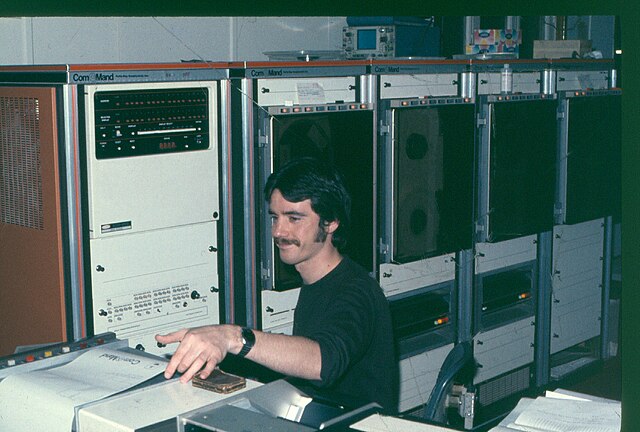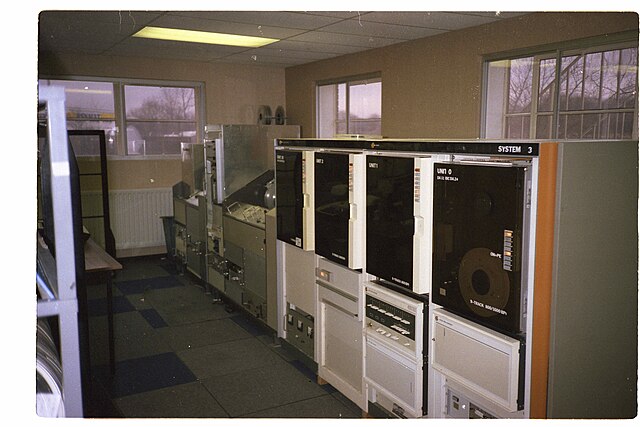The Data General Nova is a series of 16-bit minicomputers released by the American company Data General. The Nova family was very popular in the 1970s and ultimately sold tens of thousands of units.
Data General Nova 1200 front panel
A Nova system (beige and yellow, center bottom) and a cartridge hard disk system (opened, below Nova) in a mostly empty rack mount
A Nova 1200, mid-right, processed the images generated by the EMI-Scanner, the world's first commercially available CT scanner.
Nova 1200 CPU printed circuit board. The 74181 ALU is the large IC center-right.
A minicomputer, or colloquially mini, is a type of smaller general-purpose computer developed in the mid-1960s and sold at a much lower price than mainframe and mid-size computers from IBM and its direct competitors. In a 1970 survey, The New York Times suggested a consensus definition of a minicomputer as a machine costing less than US$25,000, with an input-output device such as a teleprinter and at least four thousand words of memory, that is capable of running programs in a higher level language, such as Fortran or BASIC.
Six different minicomputers (out of many more models) produced by the Digital Equipment Corporation (DEC) with the year of introduction in brackets: First row: PDP-1 (1959), PDP-7 (1964), PDP-8 (1965); second row: PDP-8/E (1970), PDP-11/70 (1975), PDP-15 (1970).
Data General Nova, serial number 1, on display at the Computer History Museum
Raytheon RDS 500 seismic processing system in Benghazi in 1978
Varian Data Machines system connected to analogue tape playback system in 1984








